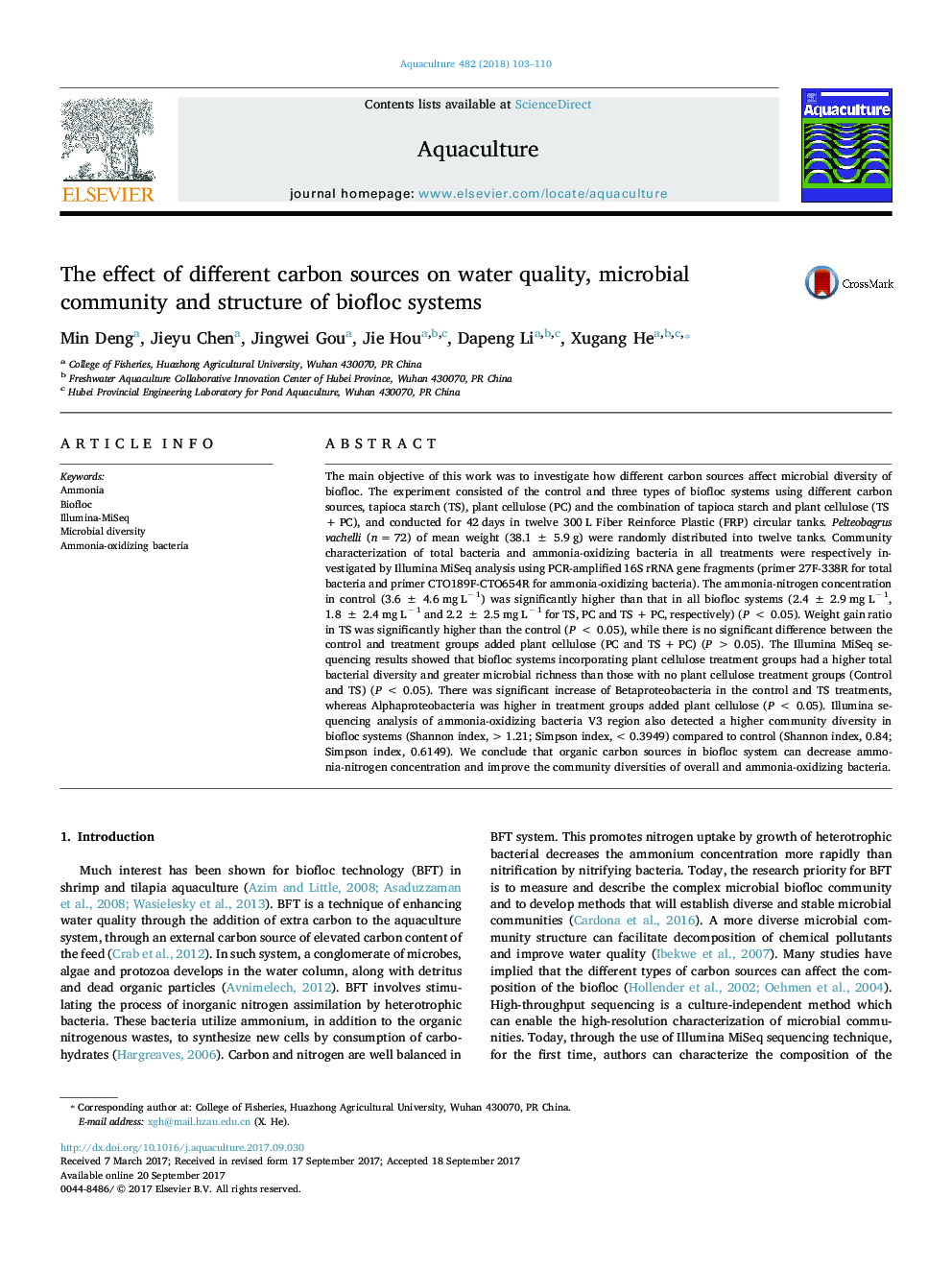| کد مقاله | کد نشریه | سال انتشار | مقاله انگلیسی | نسخه تمام متن |
|---|---|---|---|---|
| 5539115 | 1552806 | 2018 | 8 صفحه PDF | دانلود رایگان |
- Plant cellulose is better than tapioca starch in improving bacteria diversity in biofloc system.
- Both tapioca starch and plant cellulose can improve ammonia-oxidizing bacteria diversity in biofloc system.
- Plant cellulose can improve the percentage of Alphaproteobacteria, while tapioca can improve that of Betaproteobacteria.
- High-throughput sequencing enables the high-resolution characterization of microbial communities.
The main objective of this work was to investigate how different carbon sources affect microbial diversity of biofloc. The experiment consisted of the control and three types of biofloc systems using different carbon sources, tapioca starch (TS), plant cellulose (PC) and the combination of tapioca starch and plant cellulose (TS + PC), and conducted for 42 days in twelve 300 L Fiber Reinforce Plastic (FRP) circular tanks. Pelteobagrus vachelli (n = 72) of mean weight (38.1 ± 5.9 g) were randomly distributed into twelve tanks. Community characterization of total bacteria and ammonia-oxidizing bacteria in all treatments were respectively investigated by Illumina MiSeq analysis using PCR-amplified 16S rRNA gene fragments (primer 27F-338R for total bacteria and primer CTO189F-CTO654R for ammonia-oxidizing bacteria). The ammonia-nitrogen concentration in control (3.6 ± 4.6 mg Lâ 1) was significantly higher than that in all biofloc systems (2.4 ± 2.9 mg Lâ 1, 1.8 ± 2.4 mg Lâ 1 and 2.2 ± 2.5 mg Lâ 1 for TS, PC and TS + PC, respectively) (P < 0.05). Weight gain ratio in TS was significantly higher than the control (P < 0.05), while there is no significant difference between the control and treatment groups added plant cellulose (PC and TS + PC) (P > 0.05). The Illumina MiSeq sequencing results showed that biofloc systems incorporating plant cellulose treatment groups had a higher total bacterial diversity and greater microbial richness than those with no plant cellulose treatment groups (Control and TS) (P < 0.05). There was significant increase of Betaproteobacteria in the control and TS treatments, whereas Alphaproteobacteria was higher in treatment groups added plant cellulose (P < 0.05). Illumina sequencing analysis of ammonia-oxidizing bacteria V3 region also detected a higher community diversity in biofloc systems (Shannon index, > 1.21; Simpson index, < 0.3949) compared to control (Shannon index, 0.84; Simpson index, 0.6149). We conclude that organic carbon sources in biofloc system can decrease ammoniaânitrogen concentration and improve the community diversities of overall and ammonia-oxidizing bacteria.
Journal: Aquaculture - Volume 482, 1 January 2018, Pages 103-110
